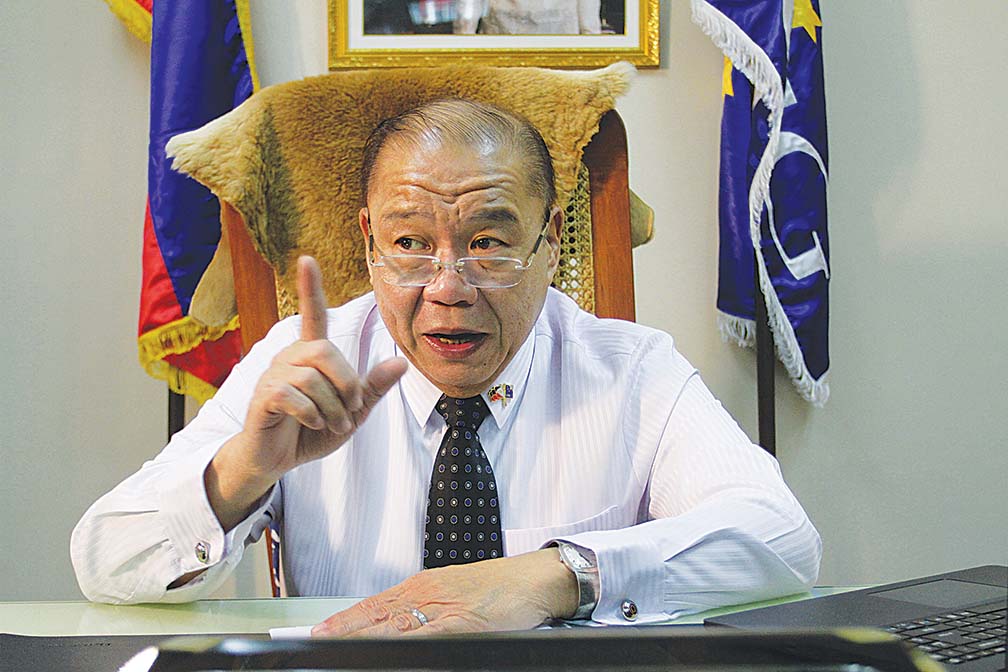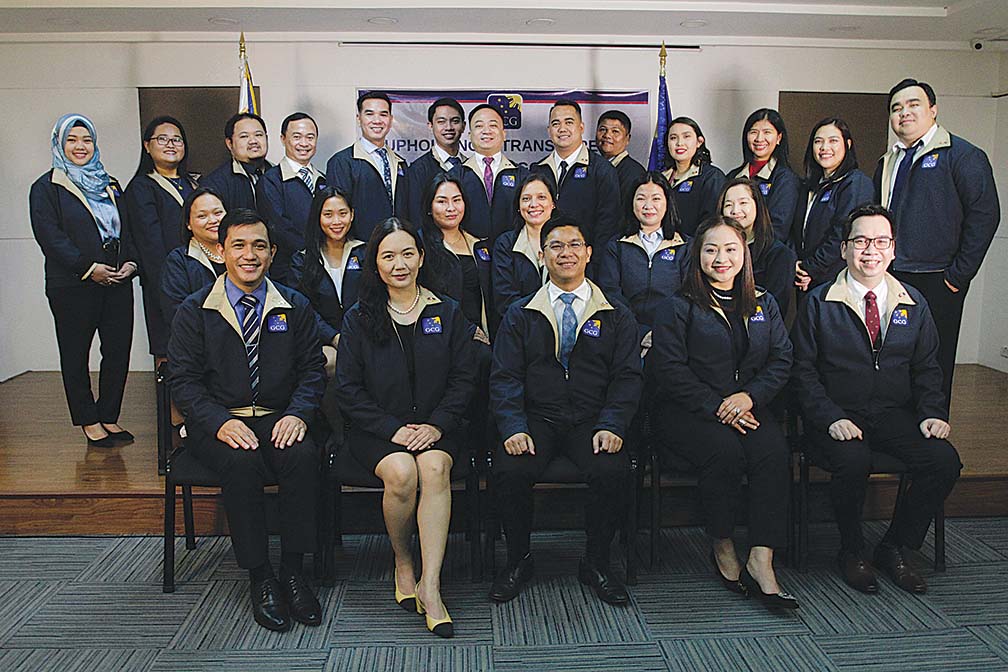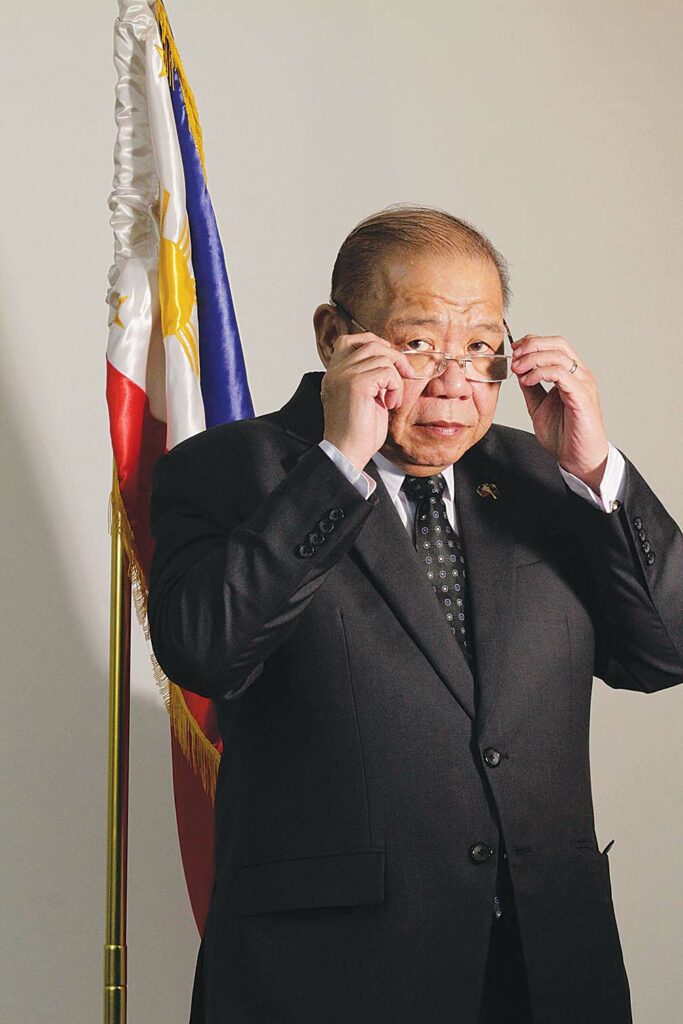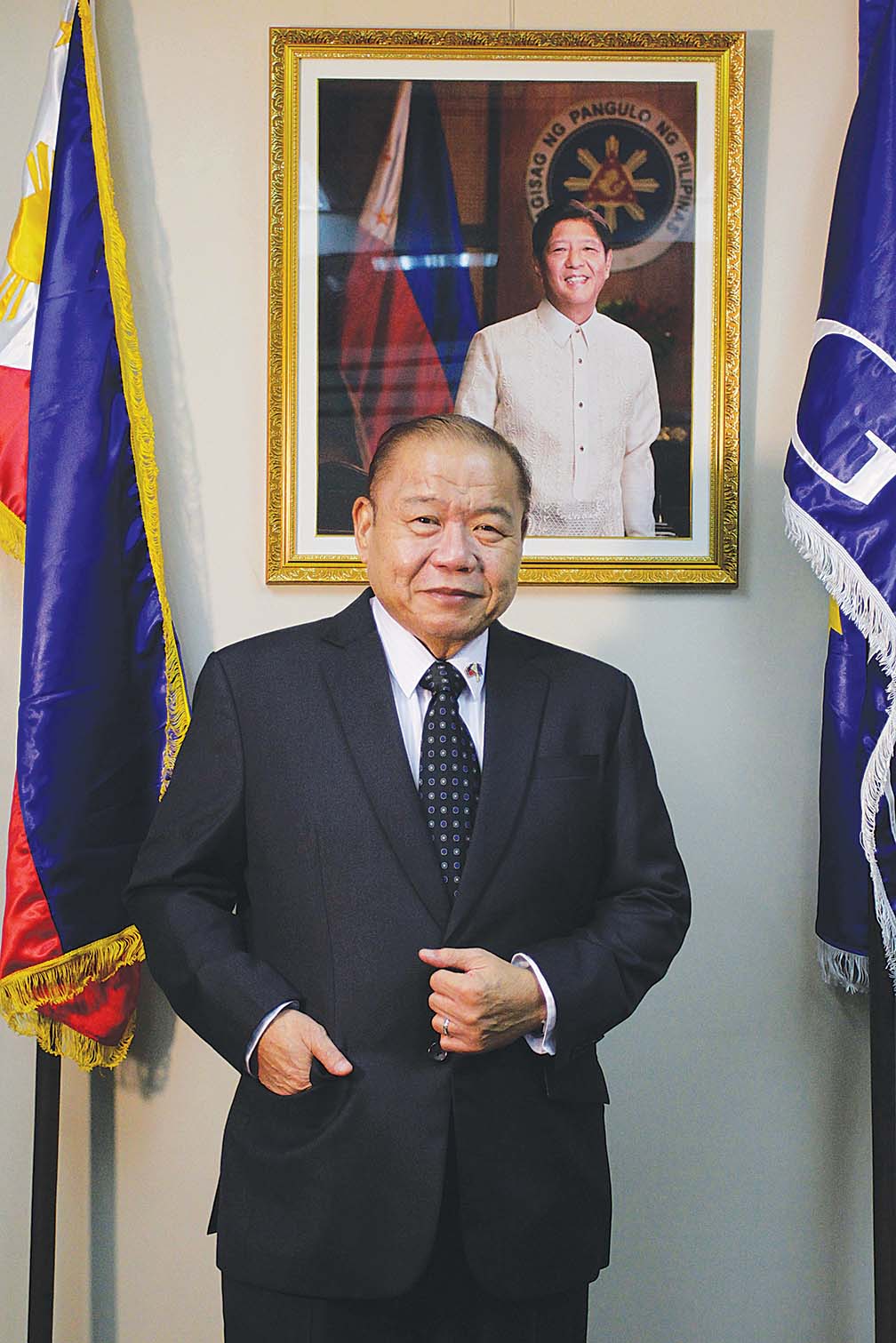Good governance, Rightsizing, Efficiency, Accountability and Transparency
After serving as Associate Justice of the Sandiganbayan for 14 years, retired Justice Alex L. Quiroz availed of early retirement in August 2022.
But the new administration had other plans for him. Quiroz was appointed that same month as Chairperson of the Governance Commission for Government-Owned or -Controlled Corporations (GCG) by President Ferdinand Marcos Jr.
Quiroz knew the GCG served as an oversight Commission that looks into the activities and transactions of GOCCs. It is the designated central advisory body that monitors and oversees GOCCs in the country.
“The President’s marching orders to me were very short: ‘Let us help our country.’ Insofar as the GOCCs are concerned, the President wants to have rightsizing and transparency to take care of its more than P10 trillion assets; and to avoid the dissipation of public funds,” Quiroz said.
He added that he decided to take on the job because he wanted to spend the “last few moments on this earth to serve the Filipino people; not only to serve but to serve well.”
Prior to his appointment as GCG head, Quiroz had worked in government for 38 years.
The son of a businessman and a government employee, he started as Special Counsel at the Office of the City Fiscal of Manila in 1985, just one year after he passed the Bar in 1984.
In 1987, he worked at the House of Representatives. “I joined the House of Representatives for eight to 10 months to help the late Speaker Ramon Mitra establish the House of Representatives, immediately after the 1986 EDSA Revolution,” Quiroz recounted.
After his stint at the House of Representatives, Quiroz joined the Office of the Solicitor General as a Solicitor from 1988 to 1992.
In 1992, he was appointed as Metropolitan Regional Trial Court Judge of Branch 69 of Pasig at the age of 34. In 2001, he was appointed as Regional Trial Court Judge Branch 156 in Pasig City.
ONE-YEAR TENURE

Under RA 10149, Quiroz said that all directors, as well as presidents, CEO and administrators of GOCCs only have a one year tenure and they should be reappointed by the President. If the President is no longer satisfied with their performance, he could easily replace them.
“That’s why at the GCG, we keep on updating all their data, their performance scorecards as well as the Integrated Corporate Reporting System (ICRS). GCG is trying as much as possible to have a comprehensive coverage of all the transactions of the GOCCs and to have a real time reporting system so that with one click, the Office of the President and the public can surmise all the activities of all 118 GOCCs. However, we are still working to digitalize all this,” Quiroz explained.
The GCG also looks into the GOCC’s day-to-day transactions, procurements as well as the incoming and outgoing expenses of the GOCCs.
The GCG has to submit a short list of all nominees to be appointed by the President and the number of nominees must be a minimum of at least 50%.
“For example, if the President appoints six, we will nominate at least nine so that the President will still have room for consideration. There are some qualification standards the GCG will always consider and one of them is the qualifications that the nominees have and with that, we leave it to the President to appoint among the nominees,” Quiroz said.
WORK COMPENSATION
At the moment, Quiroz said GCG’s priority is to look after the work compensation of all GOCC employees as well as whether they comply with Executive Order (EO) 150.
EO 150 approves the compensation and position classification system and job grades for GOCCs.
“Secondly we have to finish all pending issues, concerns and requests of the GOCCs. So far we have been able to resolve 36 pending issues that concern funds, confidential funds, early retirement pay and service incentives payment (SIP),” he said.
He added that they still have to close the books on GOCCs that have been abolished “and we have to liquidate their assets and to pay for their liabilities.”
“Some of these GOCCs were abolished back in 2013 and yet up to now, their books have not been closed and we have to attend to this,” he added, noting that he wants to achieve all of GCG’s goals without delay.
ACCOUNTABILITY

For Quiroz, GCG’s guiding principle is to “Aim G.R.E.A.T.” GREAT means Good Governance, Rightsizing, Efficiency, Accountability and Transparency.
“That is the mandate of the President, rightsizing, efficiency, transparency, all of them redounds to one thing and that is to serve the people. It is not enough to serve the people. We need to serve them well,” he said.
He explained that since he came from the Sandiganbayan he would give more emphasis on accountability. For him, all government employees, from the lowest to the highest rank, “must always be aware of their accountability to the public.”
“The janitor, for example, should be accountable for the cleanliness of our restrooms and the highest officials must be accountable for their policies, responsibilities, and most of all, for ensuring that public funds are not dissipated,” Quiroz said.
RIGHTSIZING
From day one of his administration, President Marcos said that he would be pushing for the rightsizing of the government. However, Quiroz said that rightsizing does not necessarily mean that there will be a reduction in the government workforce.
“What is important is that the duplicity is removed. Rightsizing does not mean that you will reduce the work force. It’s not. You have to put employees in their proper places so that there will be efficiency,” Quiroz explained.
The government proposed the merger between the two banks in order to create a bigger, stronger and more resilient bank that can better serve the country’s development needs, Quiroz noted.
After the merger, Landbank will be the surviving entity—given its higher authorized capital stock of P800 billion and strong financial position.
GCG Ex-officio member and Finance Secretary Benjamin Diokno said the merger will make Landbank the number one bank in the country with an estimated asset size of about P4.18 trillion and a deposit base amounting to P3.59 trillion. While the GCG has submitted to the Office of the President a legal study that says that the proposed merger of Landbank and DBP can be done through executive action, Quiroz said the agency welcomes inquiries that will help with the government’s decision on the merger.

At this stage, the GCG is still evaluating the situation and we are waiting for all stakeholders to submit their position so that nobody will be left behind,” Quiroz said.
The GCG head said he will continue to serve in government as long as he continues to enjoy the President’s trust and confidence.
Quiroz further stated that in the meantime, the GCG, under his watch, will “perform what is mandated by law” in accordance with the directions set by Pres. Marcos.
He added that to make things simpler, GCG will always remember to Aim G.R.E.A.T. so that everything will fall in place.
“I will be very satisfied if we achieve what is achievable under the mantra G.R.E.A.T. There should always be transparency, accountability, and good governance. Most of all we must serve the people well,” Quiroz said.



